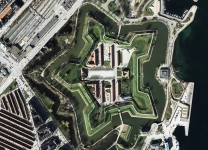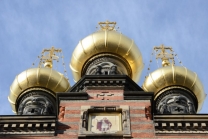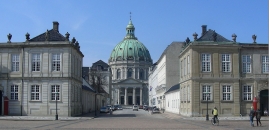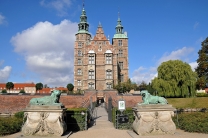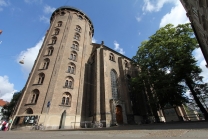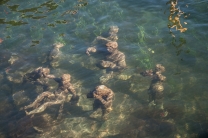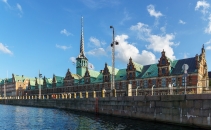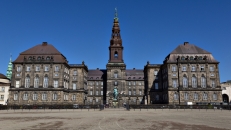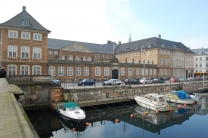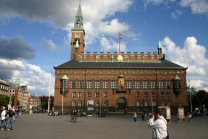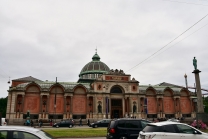No video yet

The Little Mermaid (statue)
Sculpture by Edvard Eriksen
The Little Mermaid (Danish: Den lille Havfrue) is a bronze statue by Edvard Eriksen, depicting a mermaid becoming human. The sculpture is displayed on a rock by the waterside at the Langelinie promenade in Copenhagen, Denmark.[a] It is 1.25 metres (4.1 ft) tall and weighs 175 kilograms (385 lb).
Based on the fairy tale of the same name by Danish author Hans Christian Andersen, the small and unimposing statue is a Copenhagen icon and has been a major tourist attraction since its unveiling in 1913. In recent decades it has become a popular target for defacement by vandals and political activists.
Mermaid is among iconic statues that symbolize cities; others include: Manneken Pis in Brussels, the Statue of Liberty in New York and Christ the Redeemer in Rio de Janeiro. In several cases, cities have commissioned statues for such a purpose, such as with Singapore's Merlion.
History
Ellen Price as the Little Mermaid, Royal Danish Ballet, 1909.The statue was commissioned in 1909 by Carl Jacobsen, son of the founder of Carlsberg, who had been fascinated by a ballet about the fairytale in Copenhagen's Royal Theatre and asked the ballerina, Ellen Price, to model for the statue. The sculptor Edvard Eriksen created the bronze statue, which was unveiled on August 23, 1913. The statue's head was modelled after Price, but as the ballerina did not agree to model in the nude, the sculptor's wife, Eline Eriksen, was used for the body.
The Copenhagen City Council arranged to move the statue to Shanghai at the Danish Pavilion for the duration of the Expo 2010 (May to October), the first time it had been moved officially from its perch since it was installed almost a century earlier. While the statue was away in Shanghai an authorised copy was displayed on a rock in the lake in Copenhagen's nearby Tivoli Gardens. Copenhagen officials have considered moving the statue several meters out into the harbour to discourage vandalism and to prevent tourists from climbing onto it, but as of May 2014 the statue remains on dry land at the water...






